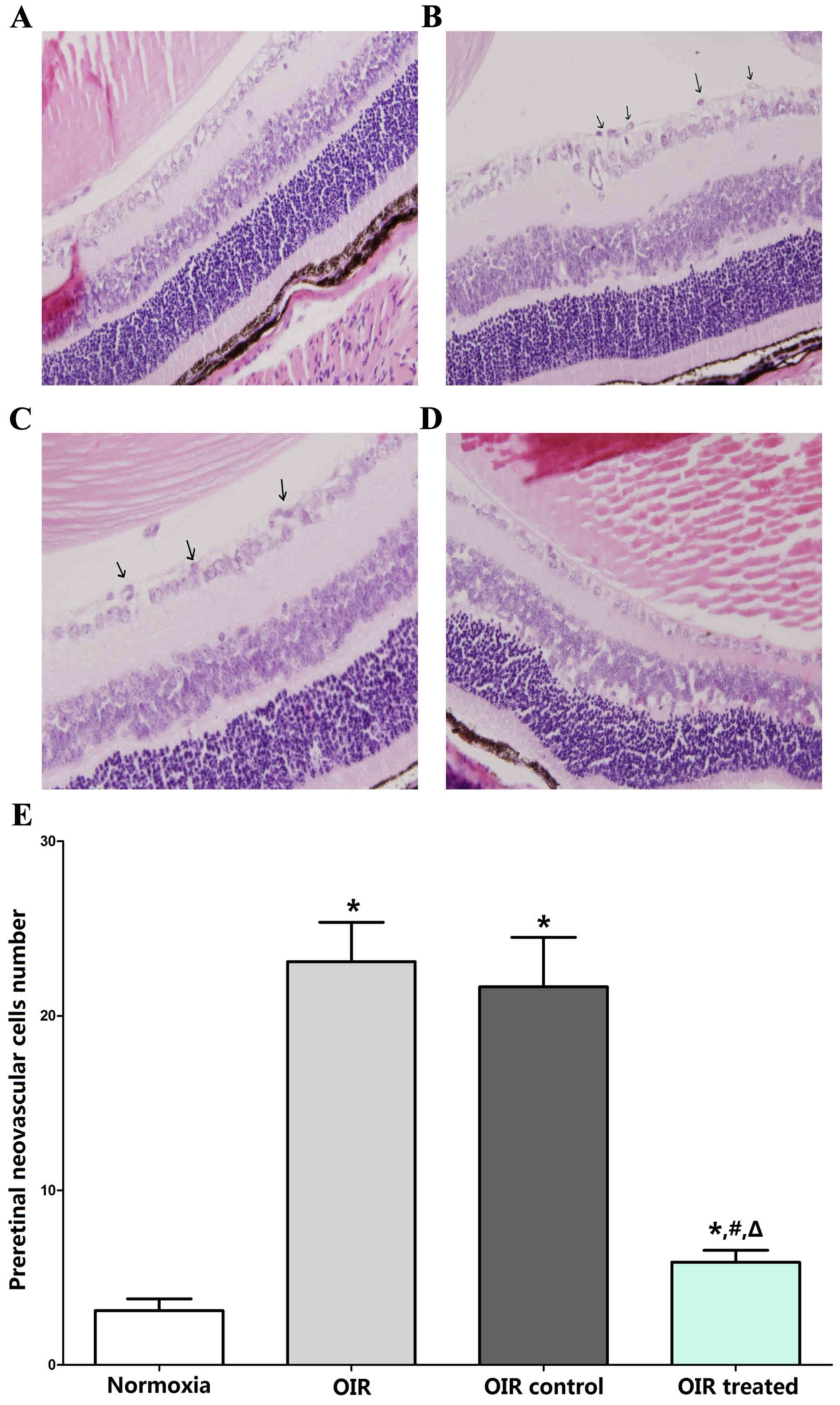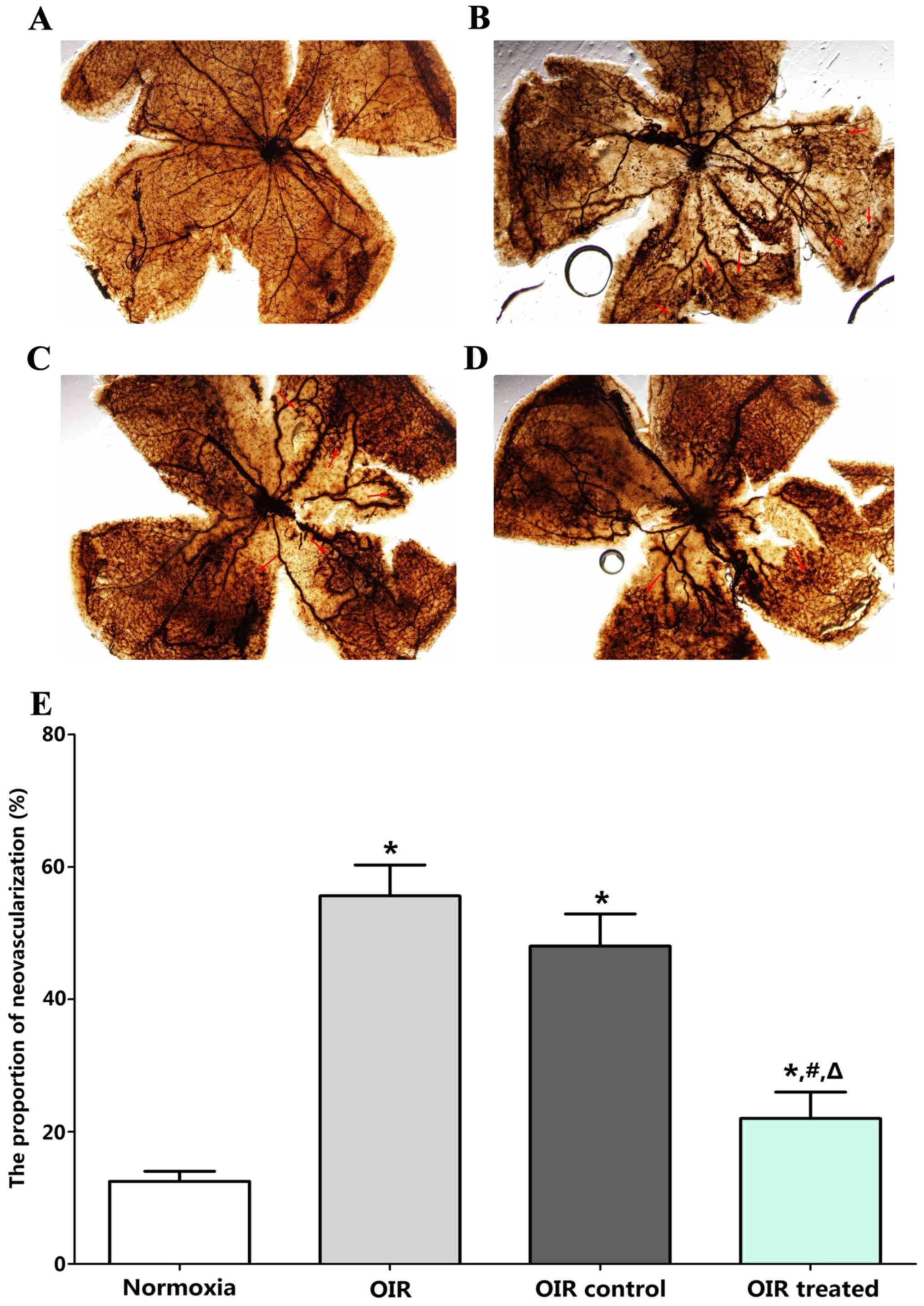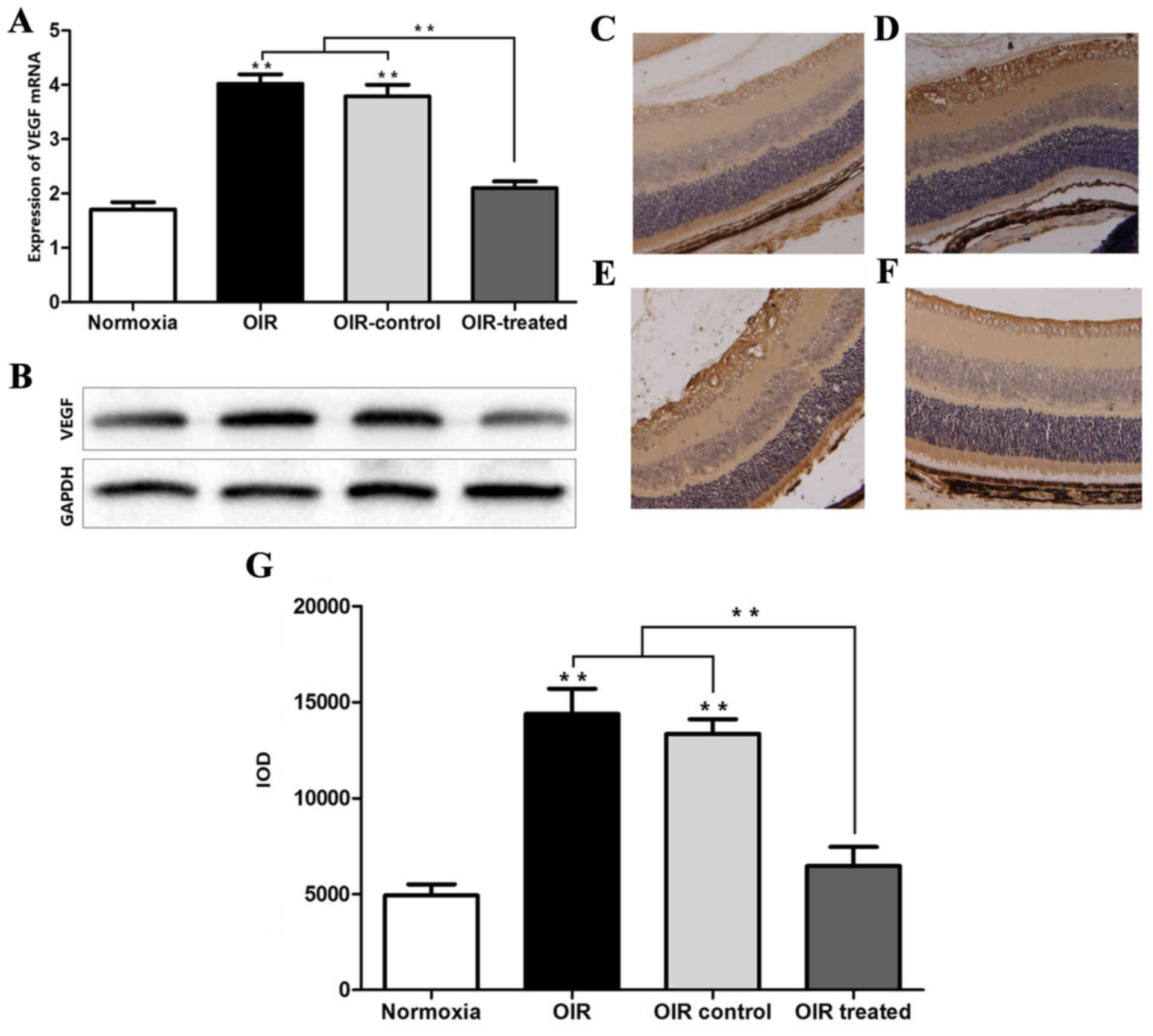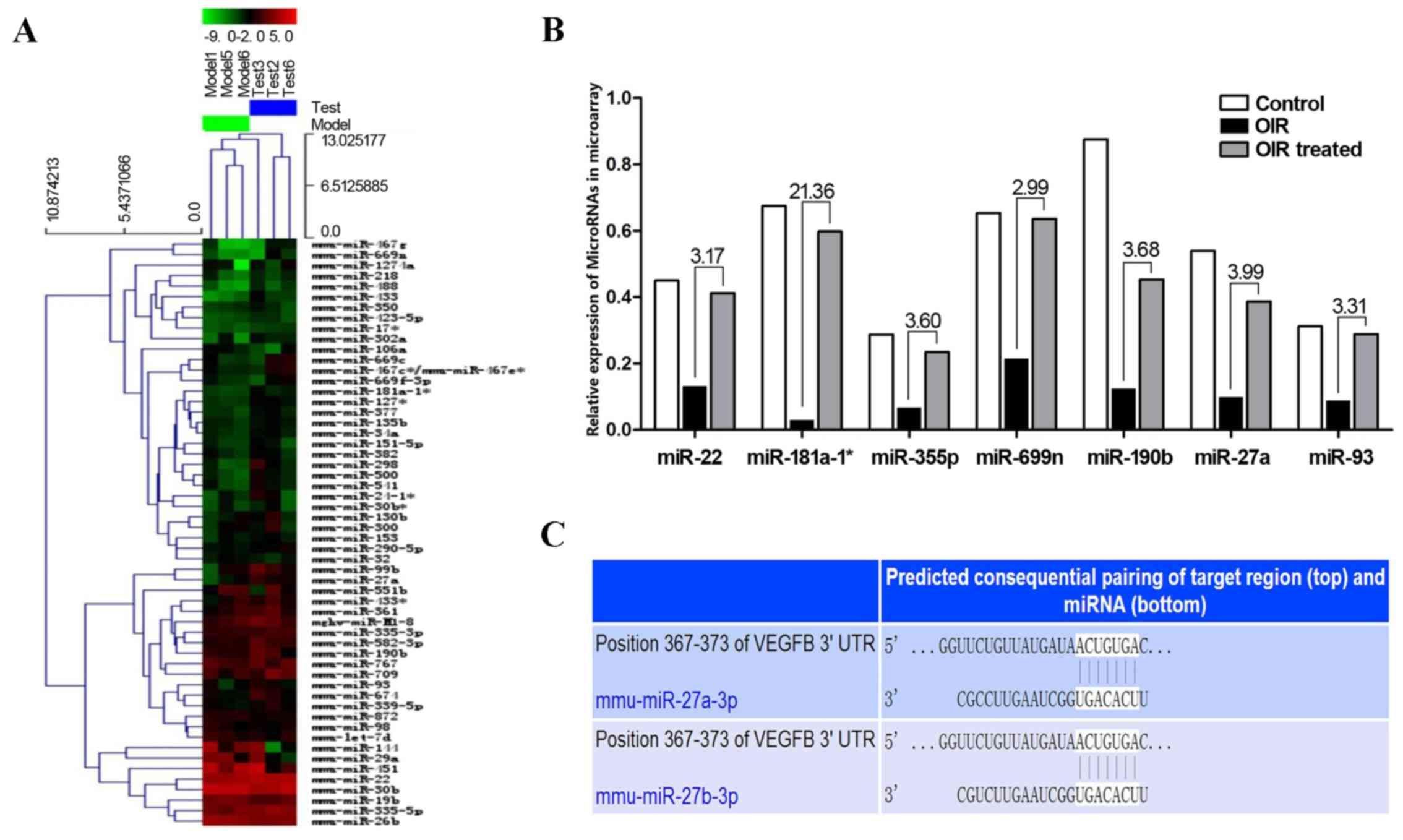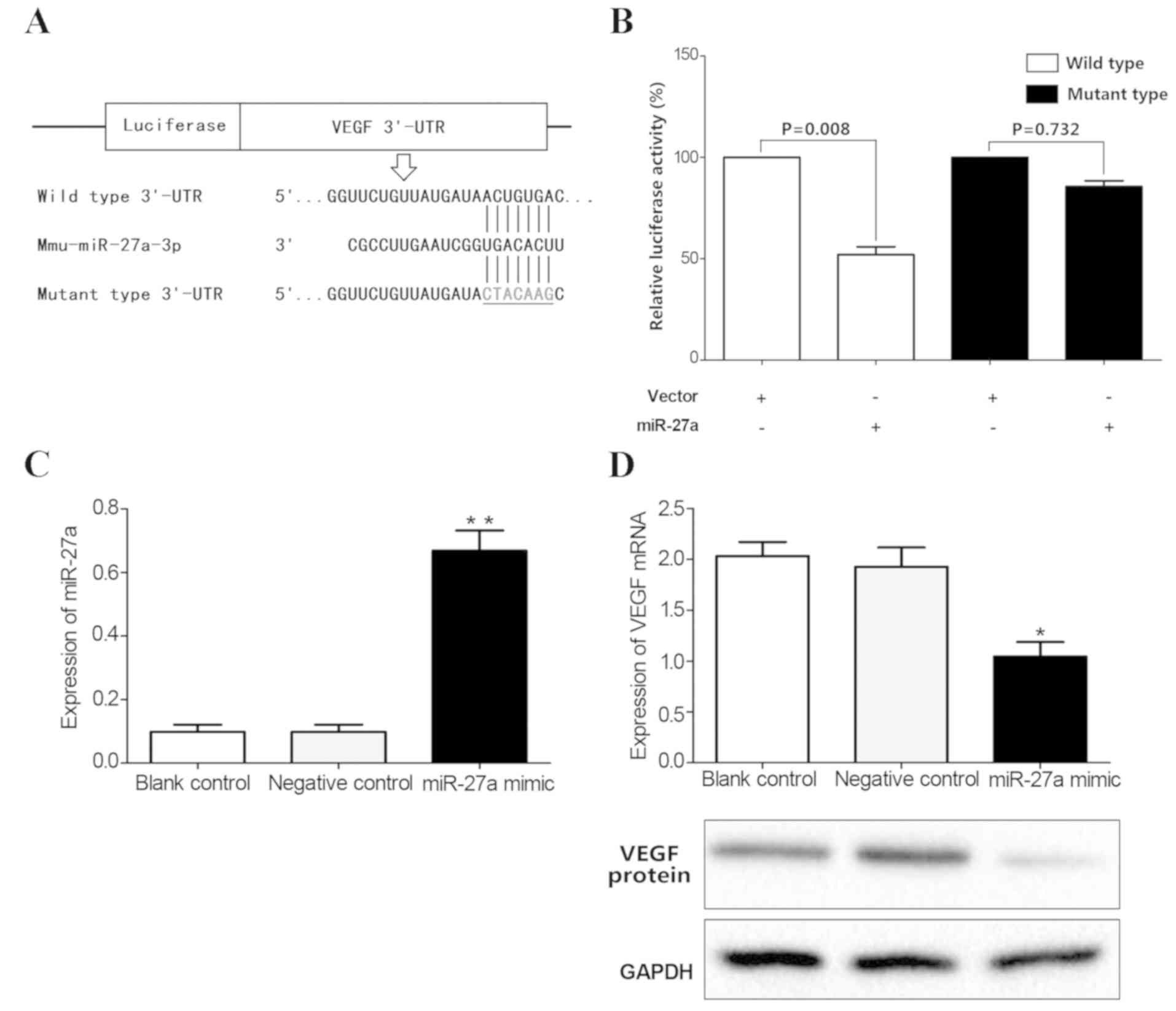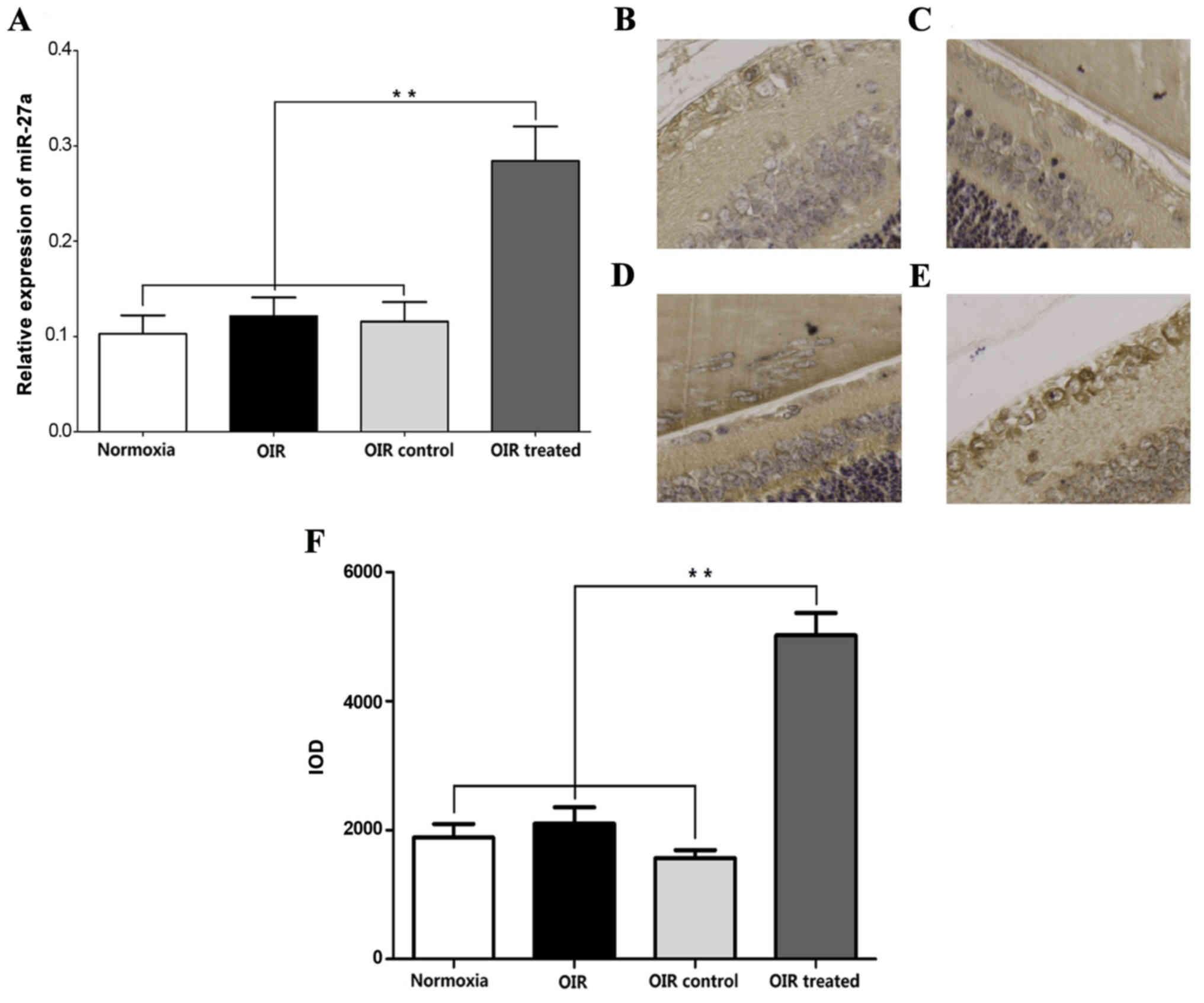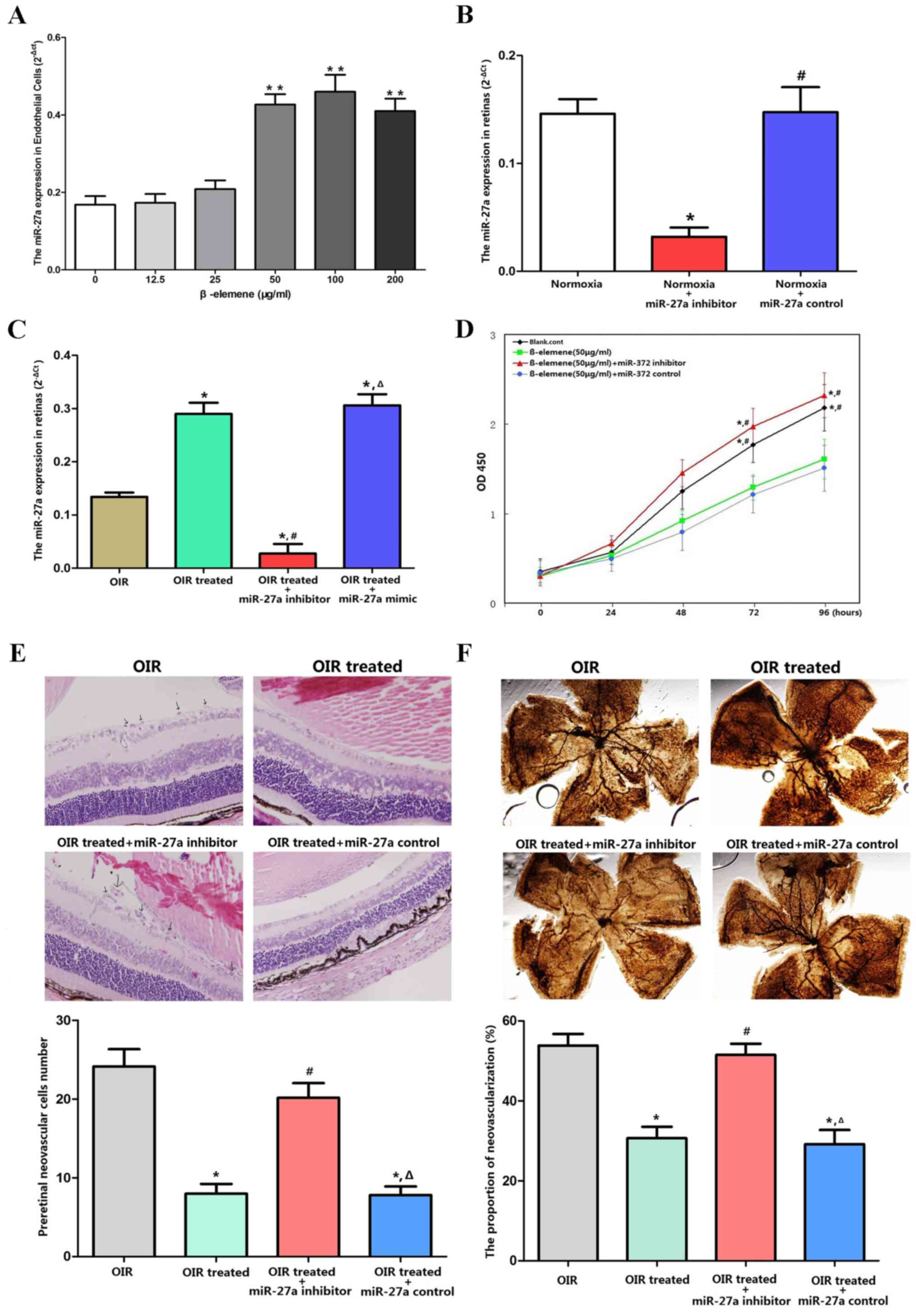|
1
|
Yoshida S, Kobayashi Y, Nakao S, Sassa Y,
Hisatomi T, Ikeda Y, Oshima Y, Kono T, Ishibashi T and Sonoda KH:
Differential association of elevated inflammatory cytokines with
postoperative fibrous proliferation and neovascularization after
unsuccessful vitrectomy in eyes with proliferative diabetic
retinopathy. Clin Ophthalmol. 11:1697–1705. 2017. View Article : Google Scholar : PubMed/NCBI
|
|
2
|
Jiang Y and Mieler WF: Update on the use
of anti-VEGF intravitreal therapies for retinal vein occulsions.
Asia Pac J Ophthalmol (Phila). 6:546–553. 2017. View Article : Google Scholar : PubMed/NCBI
|
|
3
|
Fagerholm R and Vesti E: Retinopathy of
prematurity-from recognition of risk factors to treatment
recommendations. Duodecim. 133:337–344. 2017.PubMed/NCBI
|
|
4
|
Wu W, Duan Y, Ma G, Zhou G, Windhol C,
D'Amore PA and Lei H: AAV-CRISPR/Cas9-mediated depletion of VEGFR2
blocks angiogenesis in vitro. Invest Ophthalmol Vis Sci.
58:6082–6090. 2017. View Article : Google Scholar : PubMed/NCBI
|
|
5
|
Di Y, Nie QZ and Chen XL: Matrix
metalloproteinase-9 and vascular endothelial growth factor
expression change in experimental retinal neovascularization. Int J
Ophthalmol. 9:804–808. 2016.PubMed/NCBI
|
|
6
|
Chang Z, Gao M, Zhang W, Song L, Jia Y and
Qin Y: Beta-elemene treatment is associated with improved outcomes
of patients with esophageal squamous cell carcinoma. Surg Oncol.
26:333–337. 2017. View Article : Google Scholar : PubMed/NCBI
|
|
7
|
Liu Y, Jiang ZY, Zhou YL, Qiu HH, Wang G,
Luo Y, Liu JB, Liu XW, Bu WQ, Song J, et al: β-elemene regulates
endoplasmic reticulum stress to induce the apoptosis of NSCLC cells
through PERK/IRE1α/ATF6 pathway. Biomed Pharmacother. 93:490–497.
2017. View Article : Google Scholar : PubMed/NCBI
|
|
8
|
Wu J, Tang Q, Yang L, Chen Y, Zheng F and
Hann SS: Interplay of DNA methyltransferase 1 and EZH2 through
inactivation of Stat3 contributes to β-elemene-inhibited growth of
nasopharyngeal carcinoma cells. Sci Rep. 7:5092017. View Article : Google Scholar : PubMed/NCBI
|
|
9
|
Chen W, Lu Y, Wu J, Gao M, Wang A and Xu
B: Beta-elemene inhibits melanoma growth and metastasis via
suppressing vascular endothelial growth factor-mediated
angiogenesis. Cancer Chemother Pharmacol. 67:799–808. 2011.
View Article : Google Scholar : PubMed/NCBI
|
|
10
|
Yan B, Zhou Y, Feng S, Lv C, Xiu L, Zhang
Y, Shi J, Li Y, Wei P and Qin Z: β-Elemene-Attenuated tumor
angiogenesis by targeting notch-1 in gastric cancer stem-like
cells. Evid Based Complement Alternat Med 2013. 2684682013.
|
|
11
|
Di Y, Zhang Y, Yang H, Wang A and Chen X:
The mechanism of CCN1-enhanced retinal neovascularization in
oxygen-induced retinopathy through PI3K/Akt-VEGF signaling pathway.
Drug Des Devel Ther. 9:2463–2473. 2015.PubMed/NCBI
|
|
12
|
Sui A, Zhong Y, Demetriades AM, Lu Q, Cai
Y, Gao Y, Zhu Y, Shen X and Xie B: Inhibition of integrin α5β1
ameliorates VEGF-induced retinal neovascularization and leakage by
suppressing NLRP3 inflammasome signaling in a mouse model. Graefes
Arch Clin Exp Ophthalmol. 256:951–961. 2018. View Article : Google Scholar : PubMed/NCBI
|
|
13
|
Liu WL: MicroRNA-9 inhibits retinal
neovascularization in rats with diabetic retinopathy by targeting
vascular endothelial growth factor A. J Cell Biochem. Nov
28–2018.(Epub ahead of print) doi: 10.1002/jcb.28081.
|
|
14
|
Chen N, Wang J, Hu Y, Cui B, Li W, Xu G,
Liu L and Liu S: MicroRNA-410 reduces the expression of vascular
endothelial growth factor and inhibits oxygen-induced retinal
neovascularization. PLoS One. 9:e956652014. View Article : Google Scholar : PubMed/NCBI
|
|
15
|
Ye EA and Steinle JJ: miR-146a suppresses
STAT3/VEGF pathways and reduces apoptosis through IL-6 signaling in
primary human retinal microvascular endothelial cells in high
glucose conditions. Vision Res. 139:15–22. 2017. View Article : Google Scholar : PubMed/NCBI
|
|
16
|
Smith LE, Wesolowski E, McLellan A, Kostyk
SK, D'Amato R, Sullivan R and D'Amore PA: Oxygen-induced
retinopathy in the mouse. Invest Ophthalmol Vis Sci. 35:101–111.
1994.PubMed/NCBI
|
|
17
|
Chikaraishi Y, Shimazawa M and Hara H: New
quantitative analysis, using high-resolution images, of
oxygen-induced retinal neovascularization mice. Exp Eye Res.
84:529–536. 2007. View Article : Google Scholar : PubMed/NCBI
|
|
18
|
Park K, Chen Y, Hu Y, Mayo AS, Kompella
UB, Longeras R and Ma JX: Nanoparticle-mediated expression of an
angiogenic inhibitor ameliorates ischemia-induced retinal
neovascularization and diabetes-induced retinal vascular leakage.
Diabetes. 58:1902–1913. 2009. View Article : Google Scholar : PubMed/NCBI
|
|
19
|
Yuan LH, Chen XL, Di Y and Liu ML:
CCR7/p-ERK1/2/VEGF signaling promotes retinal neovascularization in
a mouse model of oxygen-induced retinopathy. Int J Ophthalmol.
10:862–869. 2017.PubMed/NCBI
|
|
20
|
Livak KJ and Schmittgen TD: Analysis of
relative gene expression data using real-time quantitative PCR and
the 2(-Delta Delta C(T)) method. Methods. 25:402–408. 2001.
View Article : Google Scholar : PubMed/NCBI
|
|
21
|
Thomsen R, Sølvsten CA, Linnet TE,
Blechingberg J and Nielsen AL: Analysis of qPCR data by converting
exponentially related Ct values into linearly related X0 values. J
Bioinform Comput Biol. 8:885–900. 2010. View Article : Google Scholar : PubMed/NCBI
|
|
22
|
Jiang N, Chen XL, Yang HW and Ma YR:
Effects of nuclear factor κB expression on retinal
neovascularization and apoptosis in a diabetic retinopathy rat
model. Int J Ophthalmol. 8:448–452. 2015.PubMed/NCBI
|
|
23
|
Nicholson L, Vazquez-Alfageme C, Patrao
NV, Triantafyllopolou I, Bainbridge JW, Hykin PG and Sivaprasad S:
Retinal nonperfusion in the posterior pole is associated with
increased risk of neovascularization in central retinal vein
occlusion. Am J Ophthalmol. 182:118–125. 2017. View Article : Google Scholar : PubMed/NCBI
|
|
24
|
Cabral T, Mello LGM, Lima LH, Polido J,
Regatieri CV, Belfort R Jr and Mahajan VB: Retinal and choroidal
angiogenesis: A review of new targets. Int J Retina Vitreous.
3:312017. View Article : Google Scholar : PubMed/NCBI
|
|
25
|
Mi XS, Yuan TF, Ding Y, Zhong JX and So
XF: Choosing preclinical study models of diabetic retinopathy: Key
problems for consideration. Drug Des Devel Ther. 8:2311–2319. 2014.
View Article : Google Scholar : PubMed/NCBI
|
|
26
|
Sato T, Kusaka S, Shimojo H and Fujikado
T: Vitreous levels of erythropoietin and vascular endothelial
growth factor in eyes with retinopathy of prematurity.
Ophthalmology. 116:1599–1603. 2009. View Article : Google Scholar : PubMed/NCBI
|
|
27
|
Hu J, Hoang QV, Chau FY, Blair MP and Lim
JI: Intravitreal anti-vascular endothelial growth factor for
choroidal neovascularization in ocular histoplasmosis. Retin CASES
Brief. 8:24–29. 2014. View Article : Google Scholar
|
|
28
|
Falcone G, Felsani A and D'Agnano I:
Signaling by exosomal microRNAs in cancer. J Exp Clin Cancer Res.
34:322015. View Article : Google Scholar : PubMed/NCBI
|
|
29
|
Han S, Kong YC, Sun B, Han QH, Chen Y and
Wang YC: microRNA-218 inhibits oxygen-induced retinal
neovascularization via reducing the expression of roundabout 1.
Chin Med J (Engl). 129:709–715. 2016. View Article : Google Scholar : PubMed/NCBI
|



